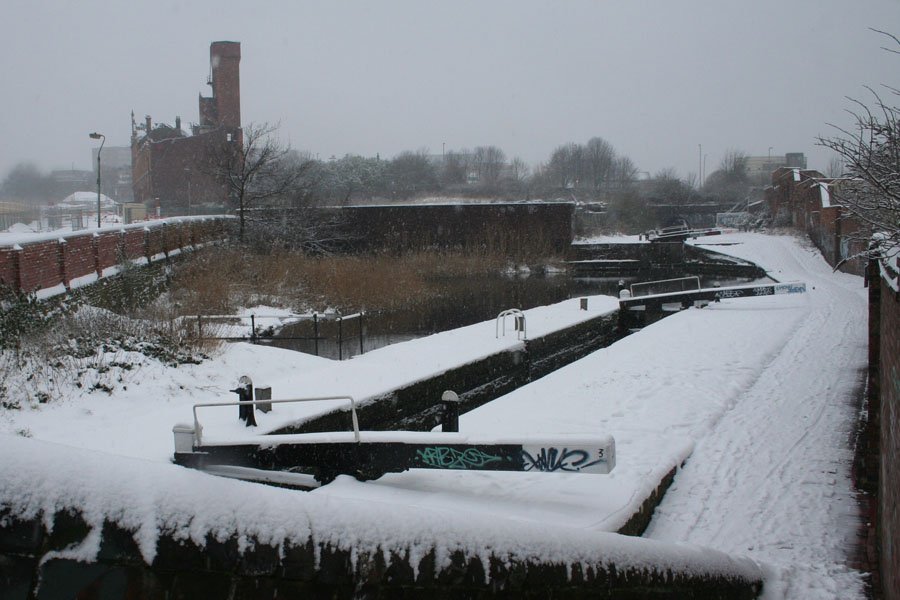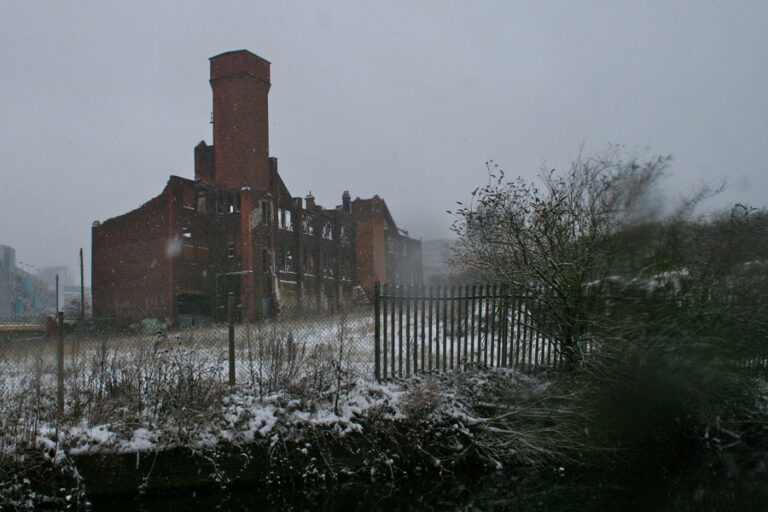There is something about city snowfall that takes one back in time. Not the huge snowfalls followed by bright sun that typifies an American winter – strong white under pale blue. No, I mean the type of snow that falls slowly, wetly, all day and blankets the city under the gloomy grey murk of Northern European skies.
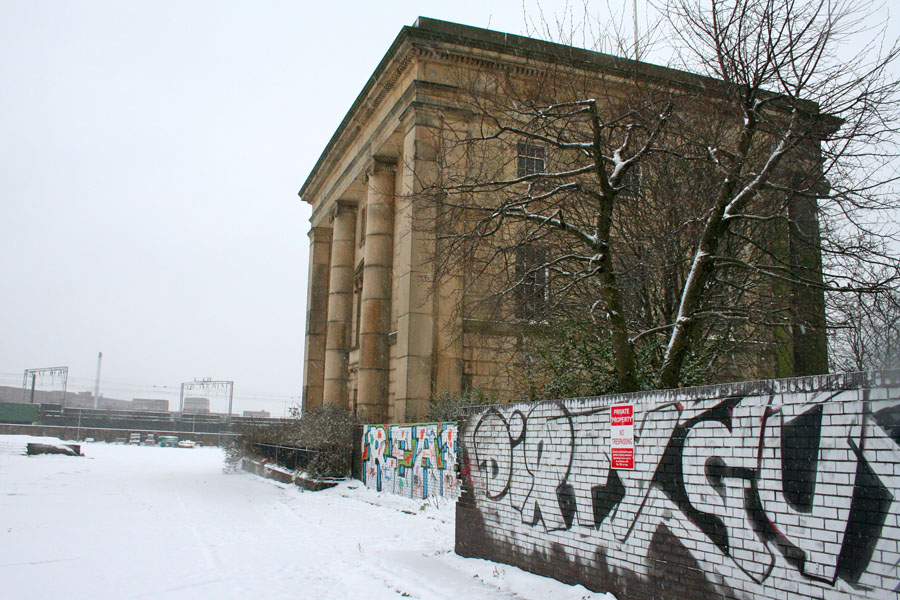
This is when the old dark stone buildings, whether municipal grandeur, proud Victorian enterprises, station facades, tenements, show their history. Dark and strong, they stand against the dim white of the snow, proudly proclaiming their presence as if in a black and white photograph of their heyday. If you are lucky, as the light fades a light in a window, yellow, dim, will add even more to the atmosphere of the past.
But of course the snow blankets the modern as well as the old, and has the curious effect of turning everything grey. Concrete and marble and glass that under a summer sun shines sharp and white, or brightly reflecting the sky’s deep blue become grey, dull, cold and stark. On days like this it can chill the soul, an impersonal scene of alienating structures, modernity’s attempt to replicate the past.
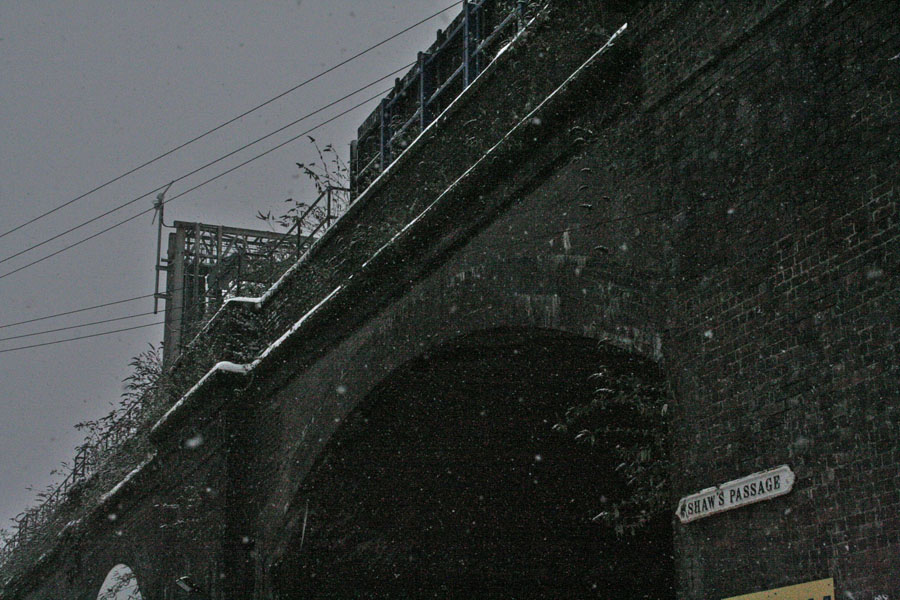
The snow covers the streets as it falls, tyre tracks tracing the few Sunday drivers; a spinning car driven by a provisional licence holder provides spectator sport to the few hardy souls who have braved the day. But away from the retail and office centre, out past the student flats and university concrete prefabs, there are derelict buildings, disused warehouses and lone boarded up pubs. A derelict railway viaduct, shrubbery hanging over its parapets, ends suddenly, sliced off before wherever it used to go.
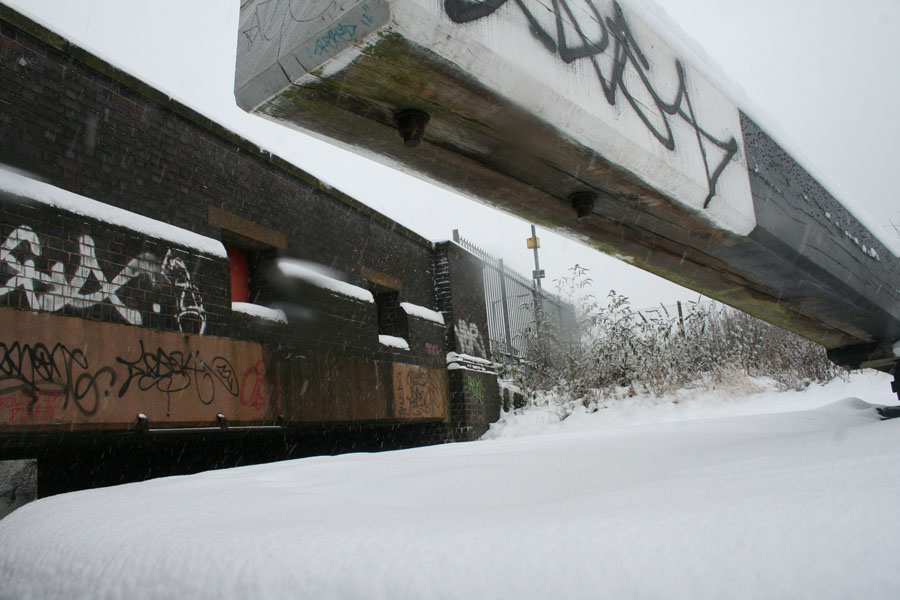
And out here, beyond the city centre streets and buildings, is a network of ring roads, railways and canals. Layer on layer of transport, as the old is surpassed and replaced by the new. The ring roads block my progress, the railways carve their way overhead on blue-black brick arches into New Street and Moor Street and Snow Hill. But down, deep, dark at the bottom are the canals, sinuous, turning, passing underneath the city in cuts and tunnels and rising in series of locks through industrial wastelands. Canals, the secret ways round, pathways beneath the cityscapes.
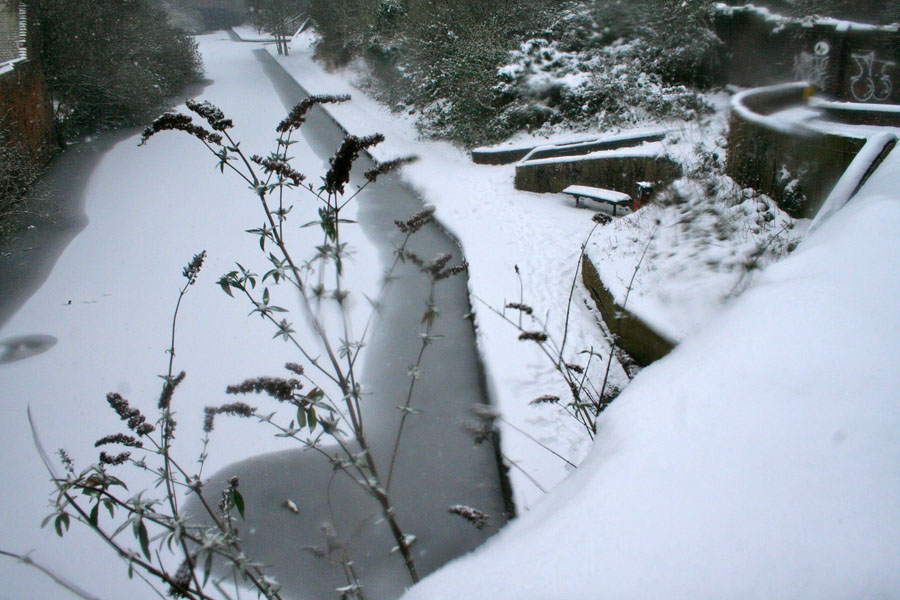
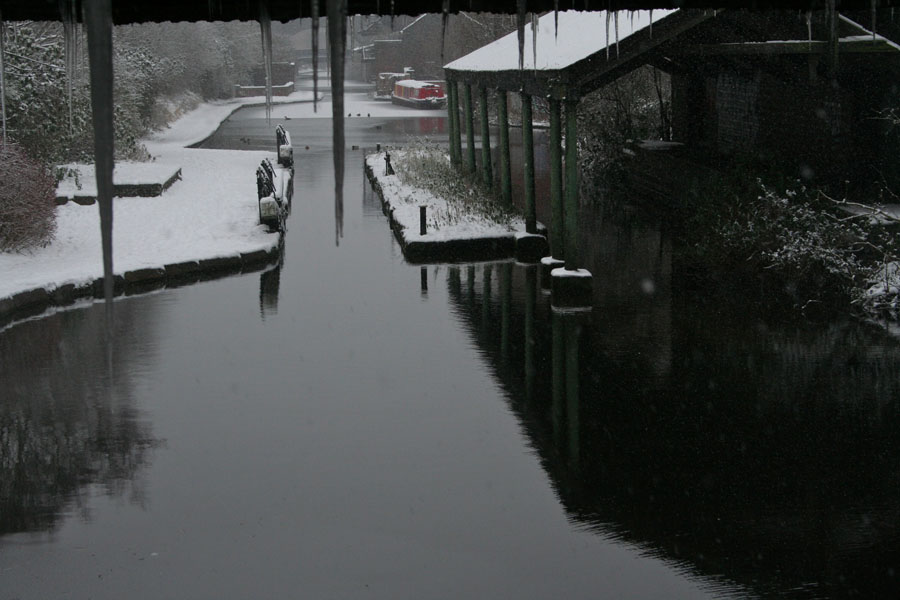
In the falling snow the watery white laceways take on a magical quality snaking between and betwixt the buildings and the empty grounds. Their historical utilitarian purpose may have long gone, yet magically they survive as – part structure, part way routes – they link and underpin the changing surface structures.
The wastelands and empty grounds. The old swept away but no new to replace. A triple dip in the wreckage of time.
